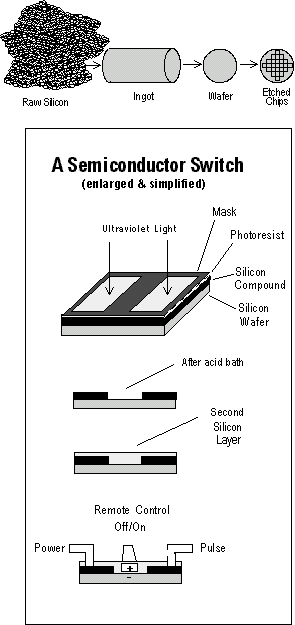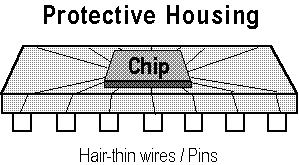Most chips are made of silicon
(SIL-ih-kawn), a natural
semiconductor and one of the most
abundant substances on earth. In
fact, silicon is the primary
component of beach sand. Trap:
Avoid embarrassment, do NOT
pronounce it silicone (SIL-ih-kohn),
which is a totally different
substance!
Semiconductors, unlike true
conductors, reluctantly transmit
electricity and can be switched
Off and On with a remotely-sent
electrical charge.
To start the chip-making
process, grains of silicon are
melted in high temperature
furnaces and shaped into
cylindrical ingots. After cooling,
the ingots are sliced into thin
circular wafers using a
diamond-bladed saw. These wafers
look metallic but are actually
brittle and delicate, like glass.
Once polished they shine like
silvered mirrors.
The switches and circuitry for
the chip start as several layers
of hand- or computer-drawn lines
and shapes which are optically
reduced to a microscopic fraction
of their original size. A
"mask" is then created
for each layer of circuitry.
The pure silicon wafer is
coated with a silicon compound and
a light-resistant material called photoresist.
The first mask is attached and the
assembly is exposed to ultraviolet
light. Where light passes through
the mask, it hardens the
photoresist. The exposed wafer is
then bathed in acid which eats
away the nonhardened photoresist
and etches the first layer of
circuitry into the silicon
compound.


